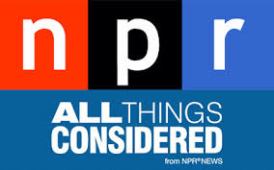
I’ll admit that I am not too familiar with NPR. The station is probably the clearest on my car radio but for whatever reason I never truly gave it a chance. But after listening to the daily afternoon news program, All Things Considered, I feel that I have a greater appreciation for the daily programming they put out.
I think the thing I liked most about All Things Considered was the variety of stories I heard within the broadcast. During the hour listeners were kept abreast of the breaking news coverage following the bomb explosions that took place at the Boston Marathon. A story about a potential battle over the debt ceiling that may take place if both political parties don’t come to an agreement followed. Afterwards a feature piece was run on the Korean American rapper Dumbfounded, and his continuing quest to become a rising star in the hip-hop community.
I really enjoyed the format of this show, everything seems like it went in the right order and the stories received what I considered to be appropriate length. If you’re not into hearing politics talked about all the time, NPR will not overload you with information you’re not interested in. But at the same time, if you are steadfast about being kept up to date with the latest dealings at the Capitol, there is enough content to stay informed. Intermingled with breaking news coverage and culture pieces, All Things Considered provides a great combo for radio listeners.
I’m not sure if NPR has won me over or not, but after listening to their programming for more then my usual 15 minutes every now and then, I think I’ll be more compelled to turn the dial if I become bored with my usual listening habits.



